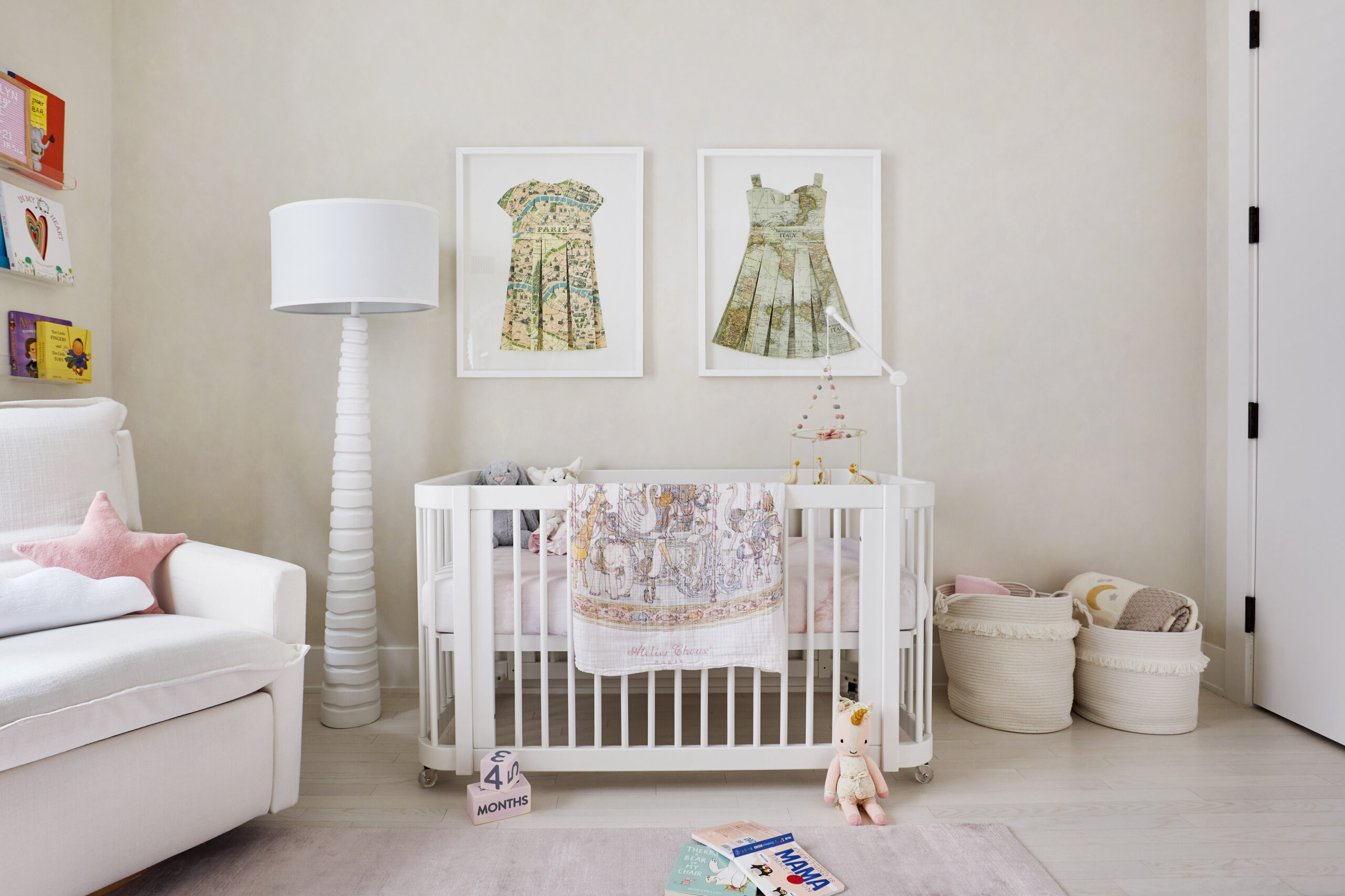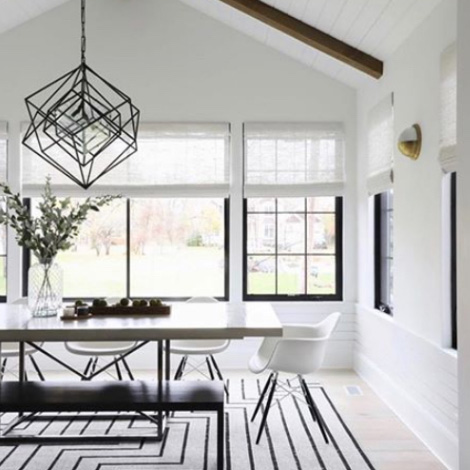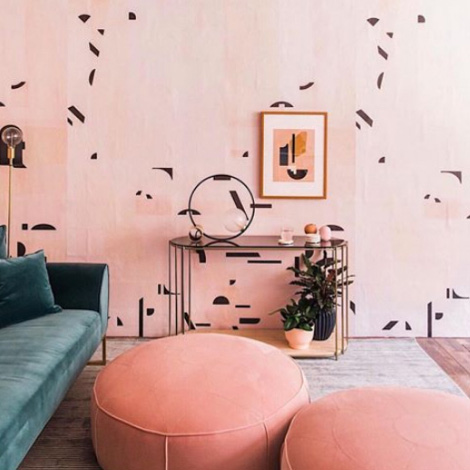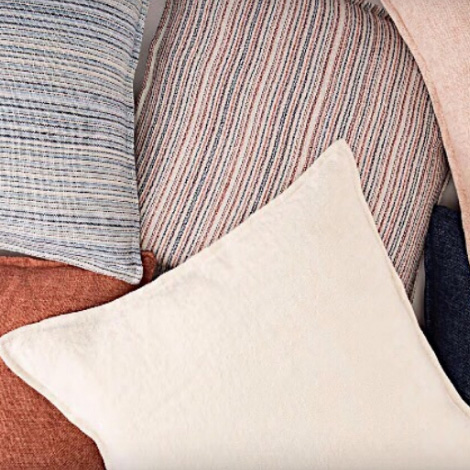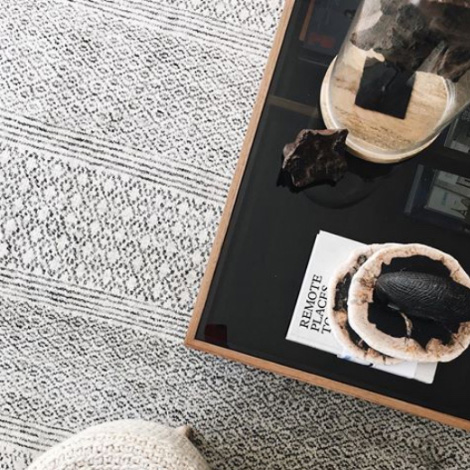Dreaming up the backdrop for a little one’s earliest moments is an opportunity to infuse joy and creativity into every detail. “I love designing spaces for kids because it’s so fun!” says Catie Rippin, lead designer of her eponymous firm. “Of course, you can have fun designing other spaces, but there’s something freeing about designing a space around play. I think it’s important to provide a space for exploring, imagination and art to thrive.”
However, styling pretty and practical spaces for tiny tots can be a tall order. “One of the biggest challenges with kids’ spaces is making sure there’s a balance between organization and durability and leaving room for kids to express themselves,” she continues. Here’s everything you need to know when it comes to designing nurseries, kids’ rooms, and play areas that are functional yet fabulous.

The easy-care Enclave collection is ideal in this playroom from Catie Rippin Design. Photo by Ryan Garvin
Pick a Starting Point
Kids’ rooms are meant to celebrate individuality and empower creativity. Designers can embrace bright hues and fun flourishes in these happy havens—the more, the merrier, quite literally. “The whimsy and playfulness you can induce into a nursery/kids’ room is unlike any other design,” says Soeur Interiors founder and designer Larisa Barton. “Having fun with colors and shapes and coming up with areas to be enjoyed by little ones elevates the design process for us.” Adds Jenny Madden, principal designer of Jenny Madden Design, “Often our clients are open to more color and pattern in kids’ rooms, and we love that!”
But the limitless potential of these unique spaces can make it difficult to know where to begin. Rippin suggests first honing in on one accent. “With kids’ spaces, I try to find one or two starting-off points for color and pattern. Usually, I choose between a patterned wallpaper or a patterned rug,” she explains. “If I’m going to do a patterned wallpaper, I opt for a more neutral rug to pair with it. If I decide I want to bring in color on the floor, I’ll usually keep the walls white and bring in some complementary colors and patterns with pillows or curtains.”
See also: 9 Designed Favorite Kid & Pet Friendly Rugs
Alternately, the pattern itself may guide your vision. Barton’s tip is to repeat a single pattern across multiple design elements for a cohesive look. “I am loving the use of colors and prints in multiple ways; i.e., using the same print for wallpaper, window treatments, and pillows,” says Barton. “It can take a playful print/pattern and make it feel so sophisticated and tailored.”
If a concept takes hold, run with it, just as Ryann Swan Design principal designer Ryann Swan Hackett did recently when designing a boys’ bedroom. “This particular boys’ room was designed for two rambunctious brothers,” she says of the project. “I was inspired by the idea of summer camps in the 1960s—the idea of all the ruckus going on in a bunk room full of boys felt fitting. So, I designed with some subtle nods to that concept without allowing the room to become too thematic,” she shares (and more on that later). The resulting space—which features a playful tented bunk and Jaipur Living’s plush Scandinavia Dula rug—is brimming with character and charm while still feeling elevated.
“I think focusing on the individuality of the child is so important,” Hackett continues. “Kids’ spaces should be a place of inspiration for children, so I pay attention to what excites them, what makes them light up, and am sure to incorporate those moments into the overall design.”
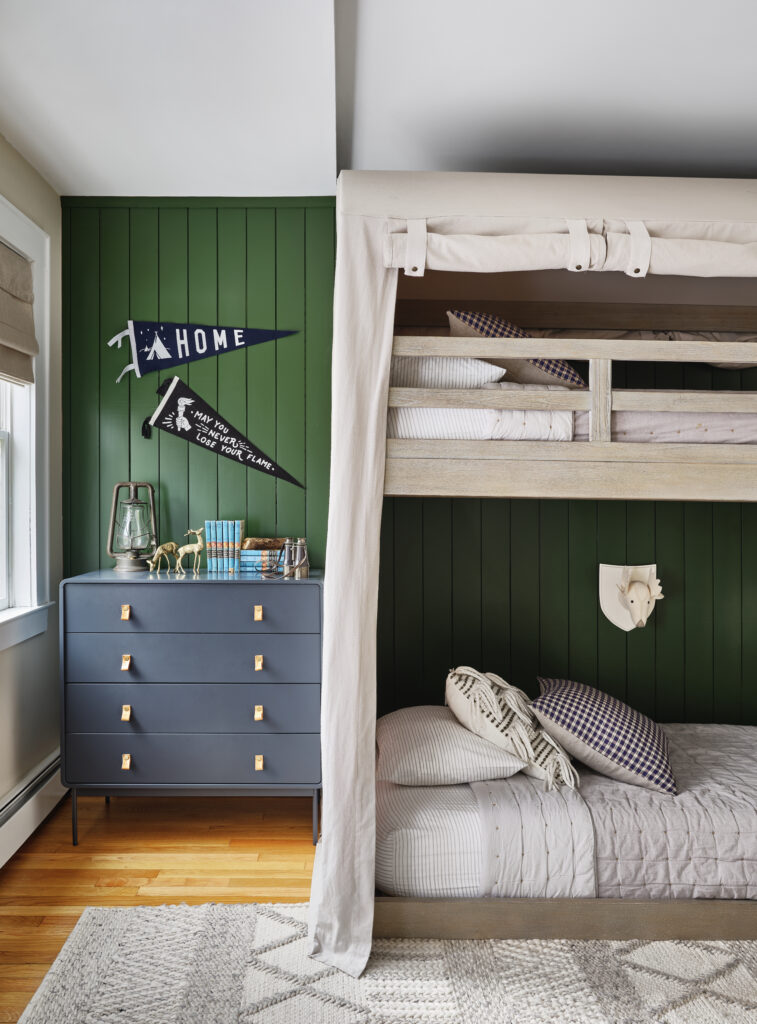
Featuring the Scandinavia Dula collection, this bunk room from Ryann Swann Design was inspired by classic summer camps of the 1960s. Styled by Matthew Gleason, photo by Read McKendree
Select the Right Rug
It’s a fact: Kids love playing on the floor. Therefore, a rug is an essential accent for any nursery or playroom to cushion little knees and provide a soft place to land. When choosing the best style of rug for a children’s space, there are a few factors to consider.
The first is durability. A rug must be able to withstand the wear and tear of playtime. “When it comes to kids and messes, it’s a when, not if, scenario,” explains Rippin. “Kids are messy, so rather than try to prevent life from happening, I like to find rugs that can hold up to dirt and spills.” Wool is undeniably the most popular choice for a kids’ space due to its hearty, naturally stain-resistant material. Rippin selected Jaipur Living’s Enclave wool rug for her own young daughter’s playroom because she “wanted something that brought in texture and a subtle pattern, but could also help hide messes,” she shares. “It had to be comfortable to sit on and provide a space for building towers and imaginary worlds. We even had a lime green playdough incident on it a few months ago, and I’m happy to report it was easily cleaned up!”
See also: The Guide: 5 Steps To Easy Rug Cleaning
In addition to wool, indoor/outdoor rugs are great for kids’ spaces due to their easy-to-clean construction, Rippin says. “Also, patterns are your friend!” she exclaims. “They’re not only a great way to bring fun and interest to a space, but they’re way more forgiving when those spills happen.”
Second, softness is key “when babies and toddlers are involved,” Madden says. “Both those little ones and their parents will be spending a lot of time on the floor!” Wool checks this box as well, but a few other sumptuous options exist. “I like to find the balance between soft and durable by selecting a rug that has some silk/viscose but has texture or pattern to hide any future stains or wear,” shares Barton. “There are also some polyester fabrics that can feel very soft but clean well.”
See also: Material World: Inside Viscose
Barton recently incorporated Jaipur Living’s Yasmin rug in a dreamy Parisian-inspired nursery in Tribeca. “We chose this rug because the client wanted something very soft and luxurious feeling,” she says of the lustrous 100% viscose rug. “Additionally, the subtle color induced warmth into the space without overpowering the minimalist design.”
Finally, size matters. “One factor that people tend to overlook is selecting the proper rug size for a room,” Barton warns. “Contrary to popular belief, going too small can make the room feel smaller. In nurseries we spend a lot of time on the floor, so having that extra rug not only makes the room look larger but also is more enjoyable and useful to how we use the room.”
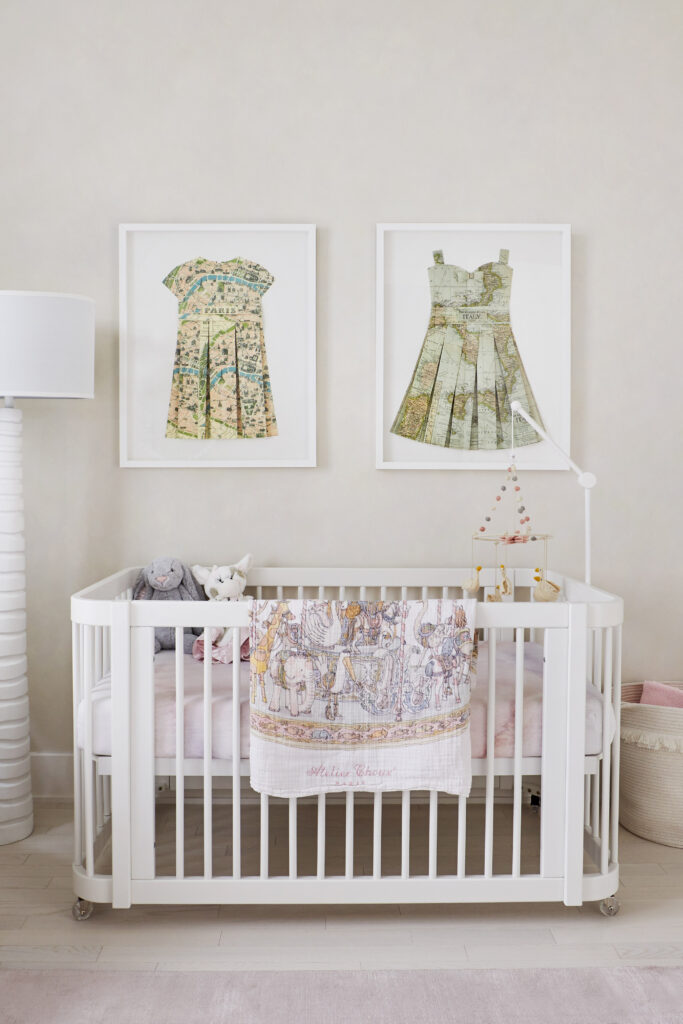
The Yasmin collection was chosen for this Parisian-inspired nursery from Soeur Interiors for its soft hand and lustrous finish. Photo by Kelsey Ann Rose
Design With Growth in Mind
While a child’s personality should certainly be reflected in his or her room design, one pitfall to avoid is jumping in headfirst with a specific theme reflecting a current interest—because, as every parent knows all too well, kids grow up quickly. “I think going too specific for any age or gender can limit you in the long run. You want a space that can grow and change with them throughout the years,” Rippin says. For instance, “there’s no reason to have a room just designed around trucks or princesses,” she continues. “I always think starting with neutrals and adding in colors and patterns around current interests is a great way to keep a space feeling fresh and not forced.”
Madden’s workaround? “Wall decor is essential to creating a kids’ space that feels complete,” she says. “It can be a way to really personalize the space, and it’s something that can easily be switched up in four years when the child enters a new phase.”
See also: 4 Can’t-Ignore Reasons To Invest In Home Decor
Hackett offers similar advice regarding rugs. “Rugs can be an investment, so I try to select rugs that fit not only for a baby but can also transition with children as they grow,” she says. “I love to see rugs go from nurseries to toddler rooms and even be used again in big-kid rooms!” Adds Barton, “I never want my clients to invest in something that won’t be able to grow with them. If we do get a piece that is more age-specific, I make sure it is cost-effective.”
Another way to accommodate growth? By prioritizing plenty of organization and smart storage space—because that collection of toys, books and gadgets will only accumulate as a child gets older. “I love wall mounting as much as I can in a kids’ room. It gives a custom feel and also opens up the room for more play space,” Barton says. “Additionally, adding built-ins/storage solutions will help keep the room looking beautiful and as tidy as possible.”
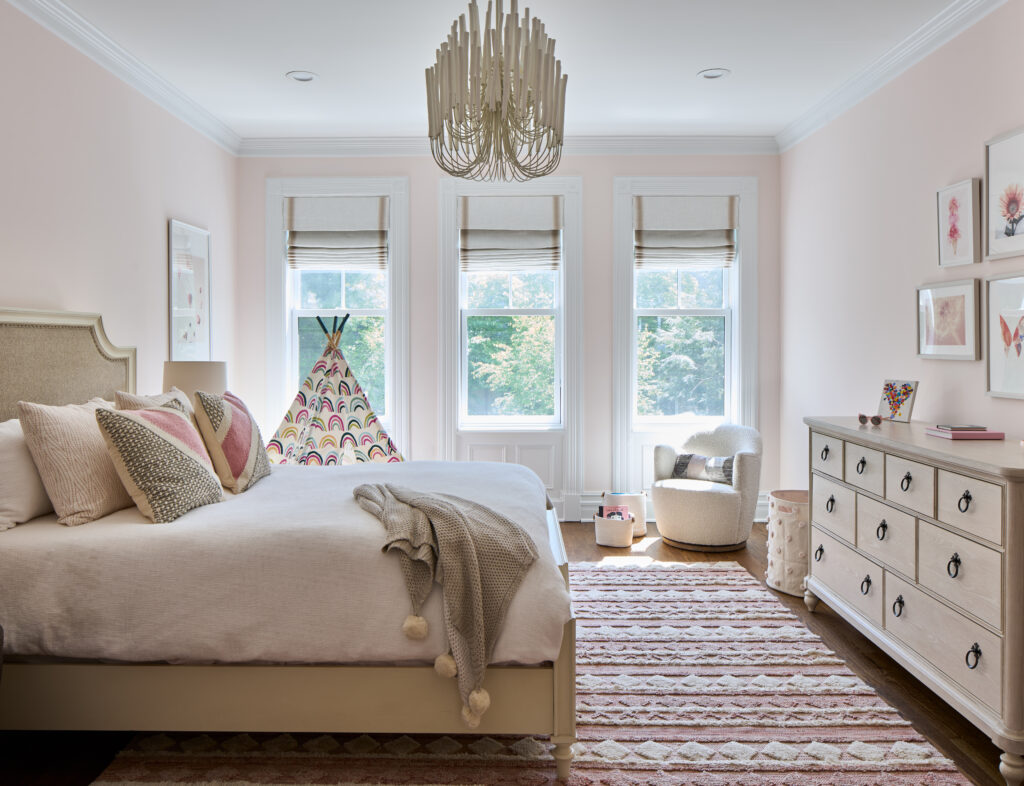
The Mumbai collection by Nikki Chu accents this pretty-in-pink bedroom by Jenny Madden Design. Photo by Marco Ricca
Other Considerations
How much say should a child get to have in all of this? Madden offers a word of advice directed at parents: “Don’t let your child make every decision for the room. They don’t know best, no offense to them!” She suggests taking some of their preferences into consideration, like “their favorite color (a muted version of this could become a wall or ceiling color), or their favorite animal or sports team (this can show up in wall decor)”—but that adults should have the final say. “Trust yourself and your designer that you’re best suited to make all of the decisions that will lead to a beautiful space they’ll love without checking in with them on every one,” she says.
See also: Finishing Flourish: 4 Guidelines To Accessories Styling
Ultimately, designing chic yet functional spaces for children is both an exciting creative endeavor and a delicate balancing act. And while style, durability, organization, and comfort are all top concerns, Hackett adds that there is one final aspect designers should always consider. “Safety,” she declares. “Ensuring that all furniture is installed with tip-kits is beyond important!”
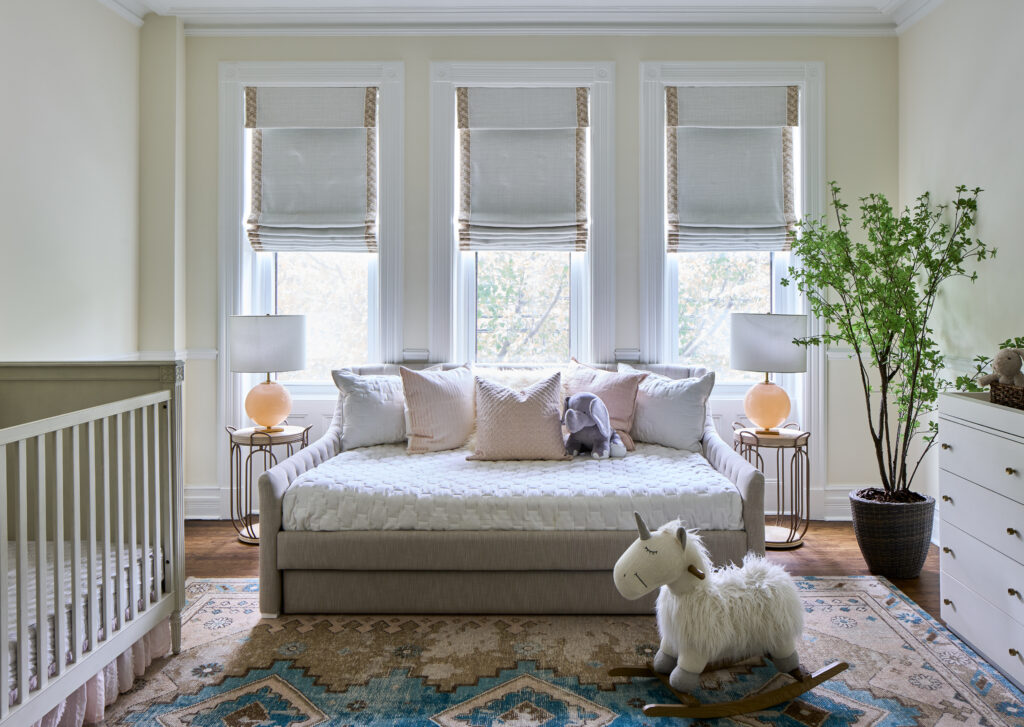
The hand-knotted Kai collection, as seen here in this Jenny Madden-designed room, is naturally resistant to stains thanks to its wool construction. Photo by Marco Ricca
Rippin’s Favorites
1. “Salinas is neutral but has a sweet side with the floral pattern, which would be great in a nursery.”
2. “Kate Lester‘s Harman just screams fun! The colors are vibrant and it has enough pattern to hide messes. The perfect pick for a playroom.”
3. “Monarch would be a great base for a kids room, bringing in enough color and pattern to be durable but also playful. The low pile is great for cleaning up messes too!”
Barton’s Favorites
1. “I love Emrys—it is a light rug with a black print to help hide any signs of wear. It is also very soft while still being made from ‘easy care’ fabric.”
2. “Harman by Kate Lester has a vibrant color with a traditional pattern, making it the perfect blend of fun yet sophisticated. It is also 100% polyester, making it easier to clean; the print will also hide any signs of wear well.”
3. “For the modern, neutral nursery, Cirque has a white/gray abstract pattern with high-and-low texture. It is a blend of viscose for softness and sheen, and polyester for durability.”
Madden’s Favorites
1. “Alpine and Kai are two of our favorites since we always recommend 100% wool rugs. We feel most comfortable introducing natural fibers into spaces with young children, and wool is such a hearty natural fiber; it holds up well to cleaning.”
2. “Mumbai—often our clients are open to more color and pattern in kids room, and we love that! One challenge we always try to meet is designing a space that is playful and exciting, yet can grow with children who are changing every day.”
Hackett’s Favorites
1. “Scandinavia Dula is a classic! The pattern is playful without being childish, the tones are neutral enough that it can easily pair in multiple different rooms—it’s so versatile!”
2. “The pile height difference in the Alpine adds a nice textural component to any space.”
3. “Azland is a great rug when a room needs a little extra oomph. The pattern is bold and the muted colors keep it from being overwhelming.”

